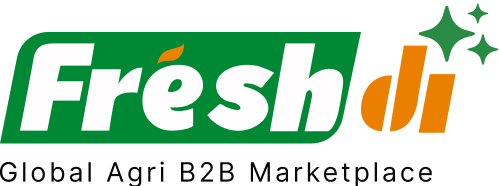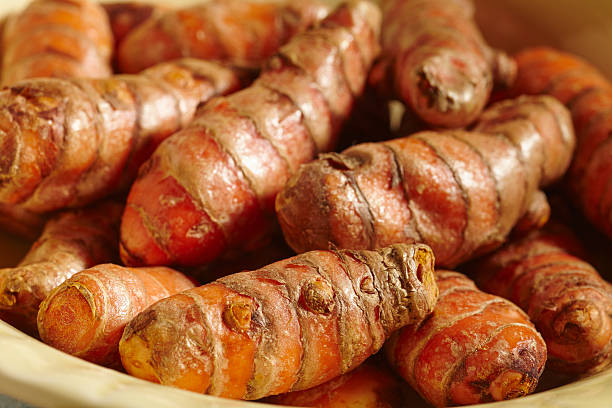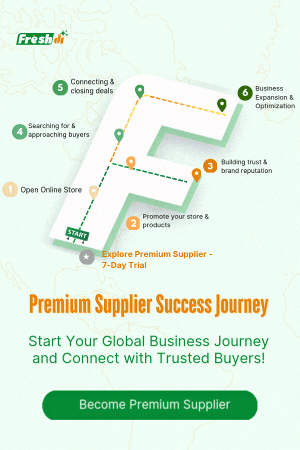Introduction – Current State of Play: The Turmeric Sector in India
India’s turmeric market has always been a golden pillar in the spice trade — but in August 2025, it’s more dynamic than ever. From sudden price surges to major policy changes and ambitious government initiatives, the turmeric sector is undergoing a major transformation.
In early 2025, the Indian government launched the National Turmeric Board, targeting a doubling of turmeric production in five years. Meanwhile, global demand for turmeric is booming thanks to its health-boosting reputation, especially in the wellness, nutraceutical, and cosmetics industries. But it’s not all smooth sailing — exporters are grappling with price volatility, quality control issues, and tightening international regulations.
For businesses sourcing turmeric from India, staying ahead of these changes is no longer optional — it’s critical. Platforms like Freshdi are increasingly vital, helping buyers track supply chain movements, verify suppliers, and monitor RFQ (Request for Quote) spikes that mirror market trends.
Let’s break down what’s happening and who’s leading the way.
Deep Dive – What’s Making Headlines? Key Recent News & Impacts
So, what’s really shaking up the turmeric market in India right now?
1. Turmeric Prices Are Skyrocketing
By April 2025, turmeric prices hit ₹160 per kilogram (approx. USD 1.92) — a level not seen in years. This spike is largely due to erratic weather patterns affecting crop yields, combined with rising international demand.
2. National Turmeric Board Launched
In a game-changing move, India rolled out the National Turmeric Board in January 2025. The goal? Increase production to 2 million tonnes and fuel exports through market development initiatives and better farmer support.
3. Surge in Value-Added Turmeric Products
The market is rapidly shifting from raw turmeric to value-added products like curcumin extracts, essential oils, and turmeric-based herbal blends. These products attract higher margins and face fewer global trade barriers.
4. Exporters Face Regulatory Roadblocks
Indian suppliers are being pushed to meet stricter standards — from pesticide residues to curcumin levels. Only 10% of India’s turmeric currently meets top-tier global curcumin benchmarks.
5. Quality, Traceability, and Certifications Are Now Must-Haves
Buyers are looking for certified suppliers with transparent supply chains. Technologies like blockchain and testing methods like HPLC are becoming mainstream for exporters who want to stay in the game.
Top 6 Verified Turmeric Suppliers in India – Navigating Current Market Realities
In this turbulent market, choosing the right supplier is half the battle. These six suppliers stand out based on their performance, certifications, global reach, and strong buyer feedback on Freshdi.
Here are the Top 6 Turmeric Suppliers in India in August 2025:
1. SHREE DURGA IMPORT EXPORT
- Known for high-volume exports and consistent quality.
- Offers both raw turmeric and processed forms.
- HACCP and ISO certified, with a focus on traceability.
2. SkyCompany
- A reliable supplier with competitive pricing.
- Strong presence in Middle East and Southeast Asian markets.
- Offers customized packaging and labeling solutions.
3. Mahadule Exports
- Specializes in organic turmeric fingers and powders.
- Strong sustainability credentials and fair-trade practices.
- Popular among European and North American clients.
4. Fiedel Trading & Exim Pvt. Ltd.
- Focuses on high-curcumin extracts and turmeric oil.
- Ideal partner for nutraceutical and cosmetic companies.
- Offers detailed lab reports and third-party certifications.
5. Shidhin Agrotech
- A go-to source for 100% organic turmeric.
- Traceable farm-to-export model using blockchain tech.
- High buyer retention due to quality consistency.
6. Tatsya Edibles LLP
- Offers turmeric in bulk and branded retail packs.
- Known for fast order turnaround and responsive service.
- Strong digital presence and verified on Freshdi.
Dynamic Ranking Note: Platforms like Freshdi offer real-time updates and dynamic rankings such as Supplier of the Month or Top Trending Exporters, giving buyers insights into recent performance and RFQ activity.
Market Navigation – Strategic Responses to The Prevailing Turmeric Landscape in India
Given the current turbulence, how should businesses react?
Opportunities You Shouldn’t Miss
- Tapping Global Demand: With the turmeric market expected to hit USD 2.5 billion by 2030, now is the time to lock in long-term supply contracts.
- Move Into Value-Added Products: Products like curcumin extracts and turmeric oils are less affected by raw material price swings and fetch better margins.
- Leverage Government Initiatives: The National Turmeric Board is opening new subsidies, export programs, and innovation clusters — a golden ticket for exporters.
Challenges That Need Immediate Attention
- Price Instability: With prices fluctuating week to week, businesses must adopt agile pricing strategies and consider hedging mechanisms.
- Export Rejections: Quality issues — especially around curcumin content and pesticide residues — are leading to rejected shipments in the EU and US.
- Regulatory Tightening: Labels, testing, and certificates must now meet stricter standards. Non-compliance risks include bans and contract losses.
Smart Sourcing Strategies Moving Forward
- Invest in Quality Control: Use HPLC and GC testing to ensure your turmeric meets international quality benchmarks.
- Get Certified: Certifications like ISO 22000, Organic, and HACCP are no longer optional — they’re market entry tickets.
- Traceability is King: Adopt digital tracking systems like blockchain to stand out to conscious buyers in Europe and North America.
Short-Term Outlook: What to Expect in the Coming Months
- Price Trends: Expect continued volatility, but potential softening post-monsoon depending on crop yield.
- Export Demand: Likely to stay strong, particularly for processed turmeric and certified organic.
- Supplier Shift: Buyers are increasingly moving to verified suppliers with strong digital footprints — like those on Freshdi.
Conclusion – Key Takeaways for Businesses in a Dynamic Market
The turmeric market in India is going through a defining moment. With prices surging, global demand expanding, and regulations tightening, businesses need to be more informed than ever.
Here’s what you should walk away with:
- Stay Updated: The launch of the National Turmeric Board and global demand spikes are reshaping the market daily.
- Think Beyond Raw Turmeric: Value-added products are the future — higher margins, fewer regulatory hiccups.
- Prioritize Quality and Transparency: Certifications, curcumin levels, and traceability can make or break your export game.
And don’t forget — platforms like Freshdi are your best allies in this evolving market. From verifying suppliers to tracking RFQ spikes and market insights, Freshdi empowers buyers to make smarter, faster decisions in uncertain times.
Quick Checklist for Turmeric Buyers
- ✅ Verify supplier certifications (ISO, HACCP, Organic)
- ✅ Confirm curcumin content and lab test documentation
- ✅ Monitor price trends and RFQ fluctuations via Freshdi
- ✅ Seek suppliers with end-to-end traceability systems
- ✅ Diversify into turmeric extracts, oils, and blends
Looking Ahead: The Future of India’s Turmeric Market
With strategic planning and the right sourcing partners, businesses can thrive in this high-growth space. Whether you’re sourcing in bulk or looking to launch a turmeric-based product line, the opportunities are golden — if you play it smart.
As India scales up production and global demand keeps rising, expect more players, more innovation, and more competition. Stay nimble, stay informed, and stay connected with verified suppliers on Freshdi.
FAQs
1. Why are turmeric prices so high in India right now?
Due to erratic weather, reduced yields, and sharp increases in global demand, turmeric prices have surged to highs not seen in recent years.
2. What is the National Turmeric Board, and how does it help exporters?
Launched in January 2025, it aims to double turmeric production, create new export markets, and support farmers and exporters with subsidies and infrastructure.
3. What certifications should I look for when sourcing turmeric from India?
ISO 22000, HACCP, Organic, and GMP certifications are essential for meeting global quality and safety standards.
4. How can I ensure the turmeric I buy is high in curcumin?
Ask for lab reports using HPLC testing methods, and choose suppliers on Freshdi with verified curcumin percentages.
5. Why use Freshdi for sourcing turmeric suppliers?
Freshdi offers verified supplier profiles, real-time RFQ trends, dynamic rankings, and traceability insights — helping buyers make smarter and safer procurement decisions.


